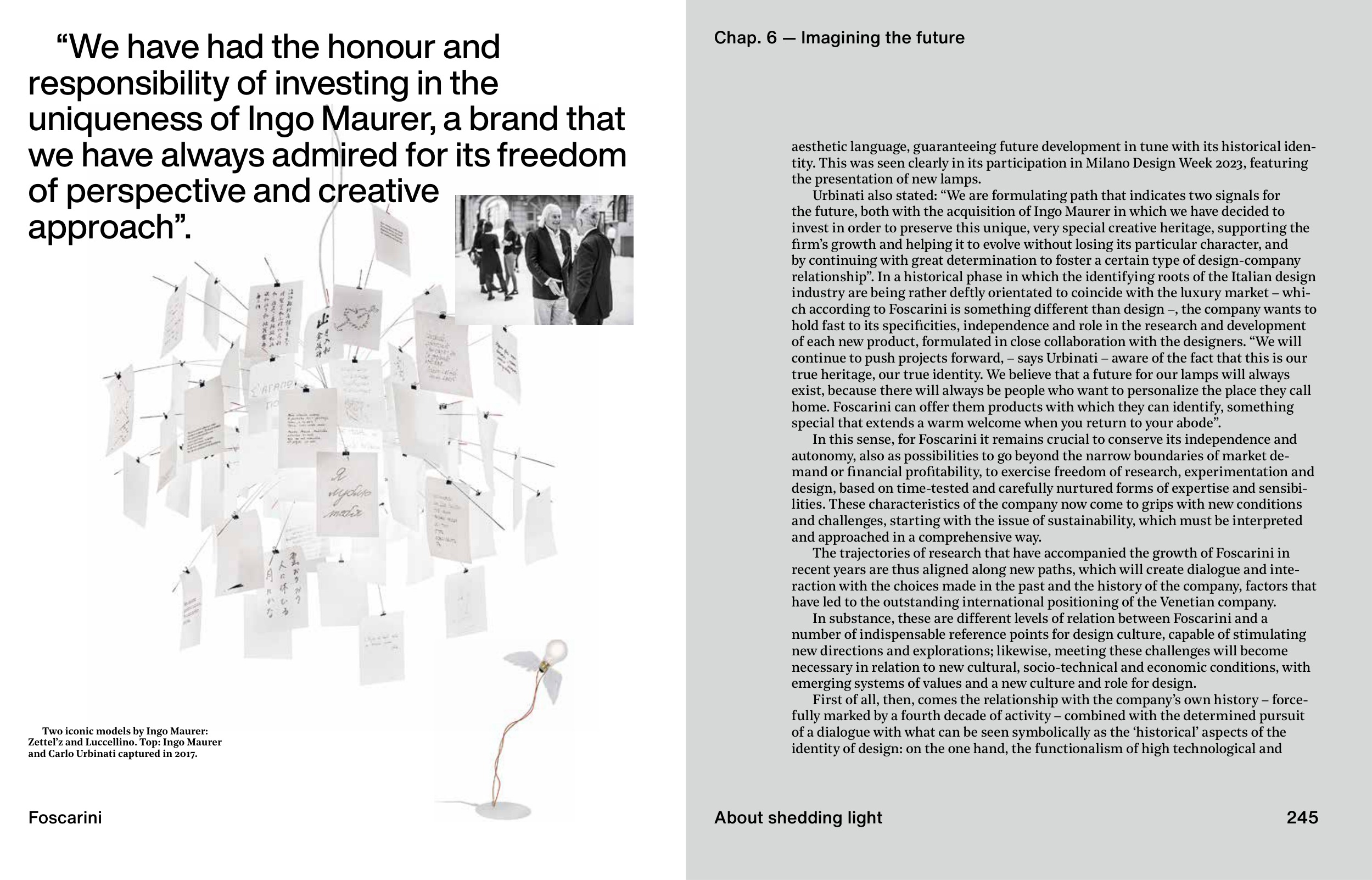Foscarini
245
“We have had the honour and
responsibility of investing in the
uniqueness of Ingo Maurer, a brand that
we have always admired for its freedom
of perspective and creative
approach”.
Two iconic models by Ingo Maurer:
Zettel’z and Luccellino. Top: Ingo Maurer
and Carlo Urbinati captured in 2017.
About shedding light
Chap. 6 — Imagining the future
aesthetic language, guaranteeing future development in tune with its historical iden-
tity. This was seen clearly in its participation in Milano Design Week 2023, featuring
the presentation of new lamps.
Urbinati also stated: “We are formulating path that indicates two signals for
the future, both with the acquisition of Ingo Maurer in which we have decided to
invest in order to preserve this unique, very special creative heritage, supporting the
fi rm’s growth and helping it to evolve without losing its particular character, and
by continuing with great determination to foster a certain type of design-company
relationship”. In a historical phase in which the identifying roots of the Italian design
industry are being rather deftly orientated to coincide with the luxury market – whi-
ch according to Foscarini is something different than design –, the company wants to
hold fast to its specifi cities, independence and role in the research and development
of each new product, formulated in close collaboration with the designers. “We will
continue to push projects forward, – says Urbinati – aware of the fact that this is our
true heritage, our true identity. We believe that a future for our lamps will always
exist, because there will always be people who want to personalize the place they call
home. Foscarini can offer them products with which they can identify, something
special that extends a warm welcome when you return to your abode”.
In this sense, for Foscarini it remains crucial to conserve its independence and
autonomy, also as possibilities to go beyond the narrow boundaries of market de-
mand or fi nancial profi tability, to exercise freedom of research, experimentation and
design, based on time-tested and carefully nurtured forms of expertise and sensibi-
lities. These characteristics of the company now come to grips with new conditions
and challenges, starting with the issue of sustainability, which must be interpreted
and approached in a comprehensive way.
The trajectories of research that have accompanied the growth of Foscarini in
recent years are thus aligned along new paths, which will create dialogue and inte-
raction with the choices made in the past and the history of the company, factors that
have led to the outstanding international positioning of the Venetian company.
In substance, these are different levels of relation between Foscarini and a
number of indispensable reference points for design culture, capable of stimulating
new directions and explorations; likewise, meeting these challenges will become
necessary in relation to new cultural, socio-technical and economic conditions, with
emerging systems of values and a new culture and role for design.
First of all, then, comes the relationship with the company’s own history – force-
fully marked by a fourth decade of activity – combined with the determined pursuit
of a dialogue with what can be seen symbolically as the ‘historical’ aspects of the
identity of design: on the one hand, the functionalism of high technological and
245


